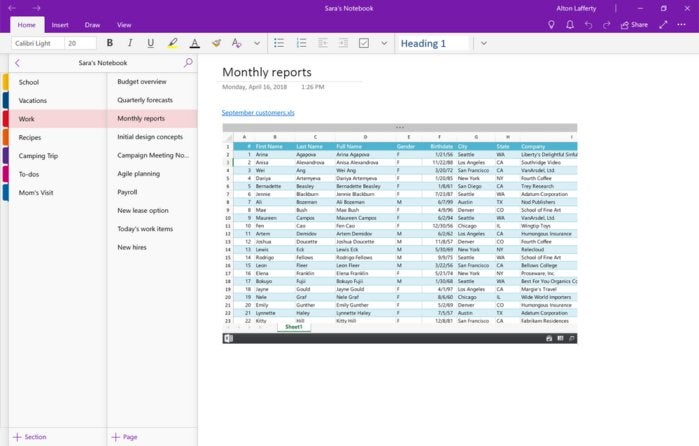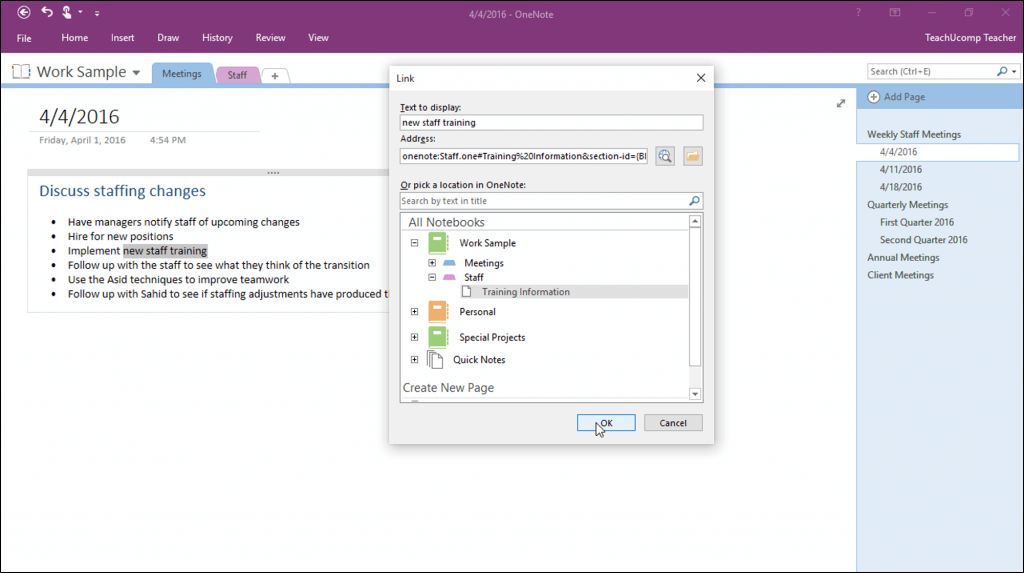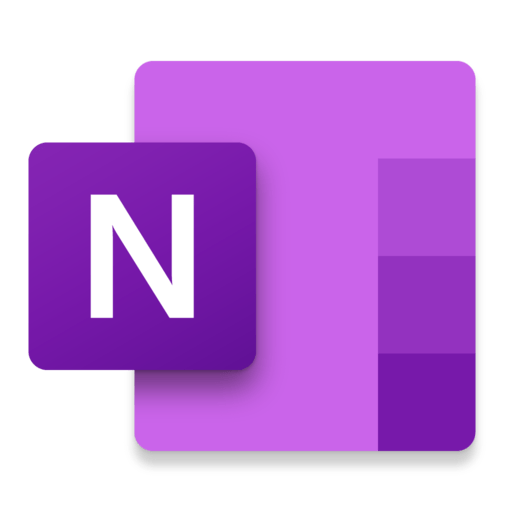Get OneNote for free! Works on Windows 7 or later and OS X Yosemite 10.10 or later.
- Change Language. Privacy & Cookies Legal Trademarks © 2021 Microsoft.com Legal Trademarks © 2021 Microsoft.com.
- For the best compatibility, we recommend the 32-bit version. If you already have other 64-bit Office products installed, use the 64-bit version of OneNote.
There are two versions of OneNote that you can deploy to users in your organization who have devices running Windows:
- OneNote: the desktop version, which was previously named OneNote 2016.
- OneNote for Windows 10: the Microsoft Store app that's available only on Windows 10.
While both versions are supported and can be installed on the same device, OneNote is the recommended version for enterprise environments. OneNote provides more features and allows you to customize user settings through Group Policy.
Note
OneNote still appears as OneNote 2016 for the following installations:
- Version 2003 or earlier of Microsoft 365 Apps
- Volume licensed versions of Office 2019, such as Office Professional Plus 2019.
OneNote deployment guidance
You can use the Office Deployment Tool or enterprise deployment software, such as Microsoft Endpoint Configuration Manager, to include or exclude OneNote when you deploy Office in your organization.
As of March 2020, OneNote is included alongside the other Office apps, such as Word, Excel, and PowerPoint, when you deploy Microsoft 365 Apps or Office 2019. There are no additional steps you need to take to include OneNote with new installations of Office. But, always be sure to check the deployment settings before you deploy, for example when using the wizards in Configuration Manager (current branch) or Microsoft Intune.
To add OneNote to an existing installation of Office
If Office is already installed on the device, but OneNote didn't get installed previously, you can run the Office Deployment Tool on the device and use the following configuration.xml file to add OneNote.
Although you're deploying the freemium version of OneNote, the first time the user opens OneNote after it's installed, the license will update automatically to the same license as the version of Office already installed on the device.

Note
- Using OneNoteFreeRetail isn't supported with volume licensed versions of Office 2019, such as Office Professional Plus 2019 or Office Standard 2019. To add OneNote back to those versions of Office, you can run an Online Repair.
- If you deploy the freemium version of OneNote, when you go to Control Panel > Programs > Programs and Features, OneNote will appear as a standalone entry named Microsoft OneNote Home and Student 2016.
To exclude OneNote from being installed
There are different ways to exclude OneNote from being installed with Office, depending on which deployment method you're using, as shown in the following table.
| Method | Instructions |
|---|---|
| Office Deployment Tool | You can use the ExcludeApp element in your configuration.xml file. We recommend that you use the Office Customization Tool to help you create your configuration.xml file. |
| Microsoft Endpoint Configuration Manager (current branch) | In the Office 365 Client Installation wizard, you can set OneNote to the Off position when you configure the Office settings. |
| Microsoft Intune | On the Configure app suite page, you can clear the check box for OneNote in the Select Office apps drop-down list. |
But, if you're allowing your users to install Office for themselves from the Office 365 portal, there is no way to exclude OneNote from being installed.
OneNote for Windows 10 deployment guidance
OneNote for Windows 10 is installed by default on computers running Windows 10. Users can also install it directly from the Microsoft Store, if you allow them to install apps from there. In either case, updates to OneNote for Windows 10 come directly from the Microsoft Store.
If you don't want your users to install apps directly from the Microsoft Store, you can set up the Microsoft Store for Business in your organization. This option allows you to control which Microsoft Store apps your users can install, including OneNote for Windows 10. For more information, see Microsoft Store for Business overview
If your users already use OneNote for Windows 10, they may continue to use it. We recommend excluding OneNote for Windows 10 for new deployments. We don't recommend uninstalling OneNote for Windows 10 for existing users because uninstalling an app permanently removes any notebook changes in the local cache that haven't been synchronized. If you plan to uninstall OneNote for Windows 10 for existing users, ensure that all open notebooks have finished synchronizing before uninstalling.
All notebooks supported by OneNote for Windows 10 are also fully supported by OneNote. All cloud-based notebooks associated with their user account will be accessible in OneNote after they sign in with that same user account.
To exclude OneNote for Windows 10 from a Windows image
To remove OneNote for Windows 10 from a Windows image so that OneNote for Windows 10 won't be installed when a new user account is created, you can use the Remove-AppxProvisionedPackage cmdlet. For the package name parameter, you should use Microsoft.Office.OneNote_2015.9126.21251.0_neutral_~_8wekyb3d8bbwe.
Microsoft Onenote 2019 Mac
Additional information about deploying OneNote
OneNote training resources We're providing free and shareable eBooks to help your users transition to the user interface and functionalities in OneNote.
Configure OneNote settings: You can use Group Policy to configure certain OneNote settings for your users. To use Group Policy, download the latest Administrative Template files (ADMX/ADML) for Office from the Microsoft Download Center and implement the policy settings by using Active Directory Domain Services (AD DS).
Note
- Group Policy requires the devices with OneNote to be joined to an Active Directory domain.
- Most of these same policy settings can be applied by using the Office cloud policy service, which doesn't require the device to be joined to a domain.
- Neither Group Policy nor Office cloud policy service can be used with Microsoft 365 Apps for business or with OneNote for Windows 10.
Support dates: In November 2019, we announced that mainstream support for OneNote will continue until October 2023. Extended support remains the same, ending in October 2025. These dates align with the support dates for Office 2019. These specific support dates apply only to OneNote included with versions of Office, such as Office Professional Plus 2016, that are available as a one-time purchase or through volume licensing agreements.

Supported languages: While both OneNote and OneNote for Windows 10 are available in most of the same languages, there are a few differences. The lists of the supported languages are available here: OneNote, OneNote for Windows 10
Other platforms: There are also versions of OneNote for Mac, iPad, iPhone, Android, and for web browsers. For more information, see What's the difference between the OneNote versions?
Related articles
[German]Microsoft has announced its future plans for the development of the office application OneNote at a session during the Ignite 2019 conference. Avid media composer torrent for mac. There are a few surprises, we learned this week.
The notebook application OneNote was Microsoft’s stepchild, who should be thrown out of Office. The development of the Win32 application OneNote 2016 was frozen and interested users were harassed in Microsoft Office 2019 with the Windows 10 OneNote app. In the meantime, the Microsoft management seems to have recognized its mistakes regarding OneNote. At Ignite 2019 there was a big surprise and a roadmap for the future development of OneNote.
Surprise #1: Support extension for OneNote 2016
The first big surprise came at the beginning of the Ignite 2019 conference. The Windows application OneNote 2016 will get support until 2025. I have disclosed the details in the blog post Support until 2025 for OneNote 2016. There was also a hint that they wanted to maintain the application again.
Surprise #2: OneNote 2016 returns to Office
In 2018 it became known that Microsoft wanted to bury OneNote. The Win32 application OneNote 2016 should not be further developed and was removed from Office 365 and Office 2019. Eligible Office 2019 users may have the Windows 10 OneNote app installed.
Microsoft has recognized this as an error and is doing an U-turn. OneNote 2016 will be re-integrated into Microsoft Office. OneNote 2016 will be included in new installations of Office 365 and Office 2019 from March 2020, as you can read here.
Onenote Vs Onenote For Windows 10

Surprise #3: Future development of OneNote
In a separate session at Ignite 2019, Ben Hodes has now commented a little on Microsoft’s plans for OneNote. With OneNote, Redmond wants to return to a uniform code base based on the new Fluid Framework. In other words: The Win32 application OneNote 2016 and the Windows 10 OneNote app should be based on the same code. What this means for the app, however, I cannot estimate.
In addition, Microsoft plans to further develop OneNote and add new features. This Verge article lists the following items planned as new features.
- Modern sync services to sync notebooks faster
- @mentions for OneNote inside of Microsoft Teams
- Microsoft Search integration to find the information in your notes
- New meeting notes features
- Tasks and To Do integration
- Accessibility improvements
- Next-generation canvas
When exactly what will come is not quite clear. A dark mode should also be supported. For the fans of the OneNote UWP app this doesn’t promise anything good – I think Microsoft will eventually pull the plug for its further development.
Similar articles
Microsoft: ‘OneNote app will be better than Win32 application’
Support until 2025 for OneNote 2016
Office-Update KB3085534 fixes OneNote sync bug
Microsoft Onenote 2019 Tutorial
Advertising
